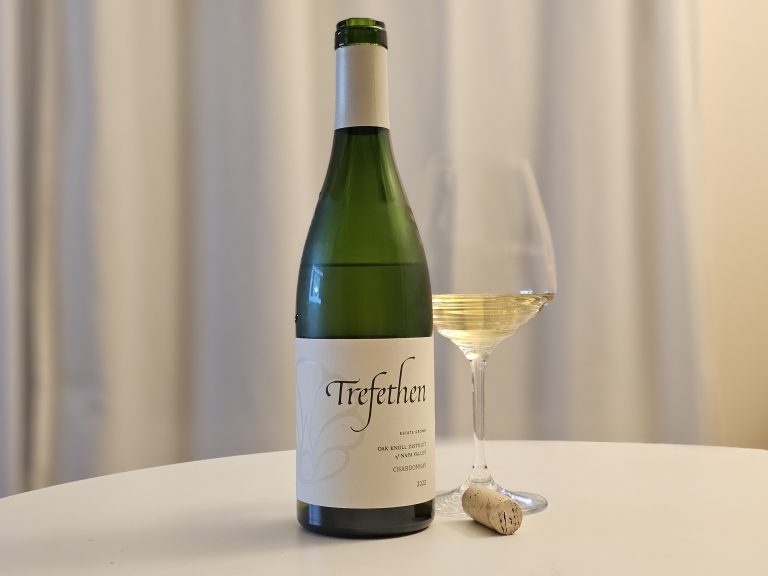Jamón and Its Flavorful Friends
Recently, a Jamón Serrano luncheon was hosted through the collaboration of INTERPORC (Spanish White Pork Association) and ICEX (Spanish Institute for Foreign Trade), organized by the Economic and Commercial Office of the Embassy of Spain in Korea. The event showcased various dishes made with Spanish white pork, along with a live Jamón Serrano carving demonstration, highlighting the exceptional quality of Spanish pork.
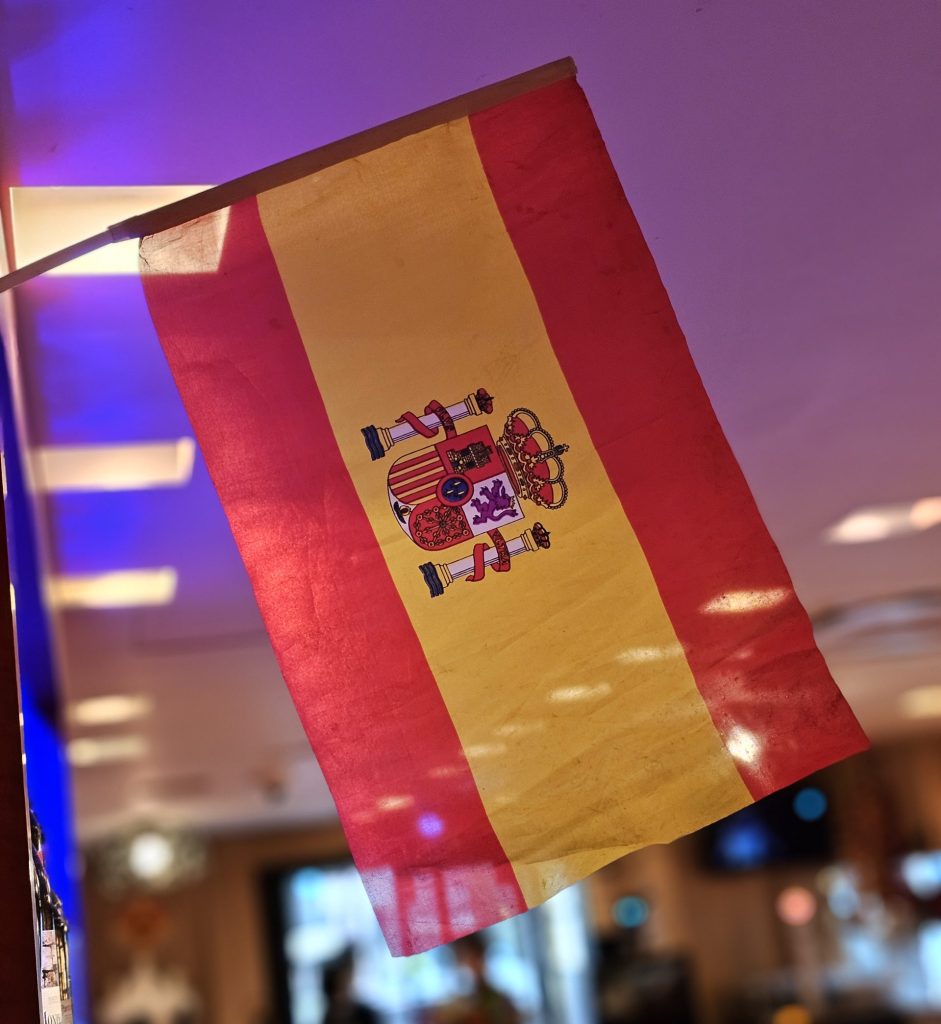
The luncheon took place at Spain Club Garosugil, a well-established Spanish restaurant that has maintained its reputation since opening over a decade ago. Last year, it was officially certified as a “Restaurant from Spain”—a designation granted by ICEX to restaurants around the world that uphold the quality and cultural authenticity of Spanish cuisine.
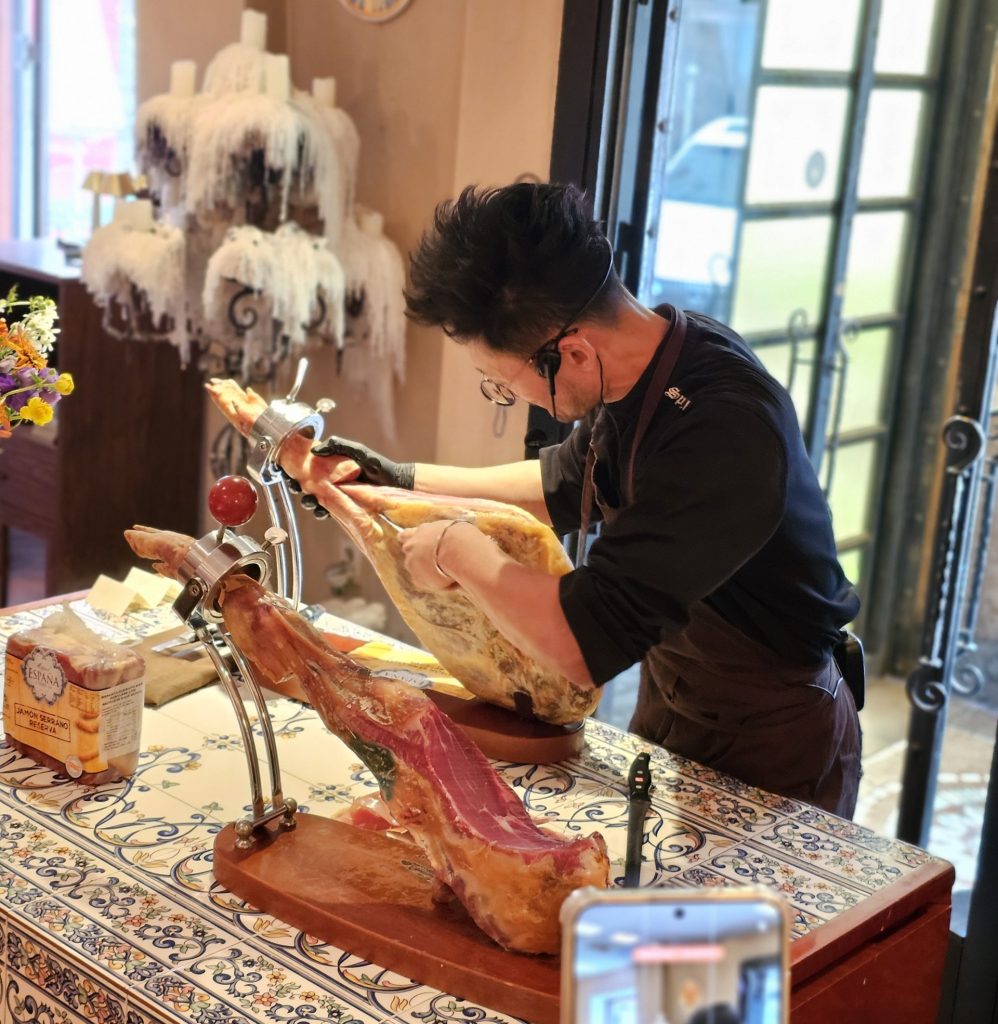
When people think of Spanish pork, Iberico often comes to mind first. It’s commonly served as a wine pairing and can even be found in Korean BBQ restaurants offering Iberico pork belly or neck cuts. However, the dishes featured at this event were all made using white pigs, not the black-haired Iberico breed. In fact, in 2023, Spain exported $348.9 million worth of pork to Korea—most of it from white pigs, not Iberico. Spanish white pork is already quite familiar in our daily lives, often without us even realizing it.
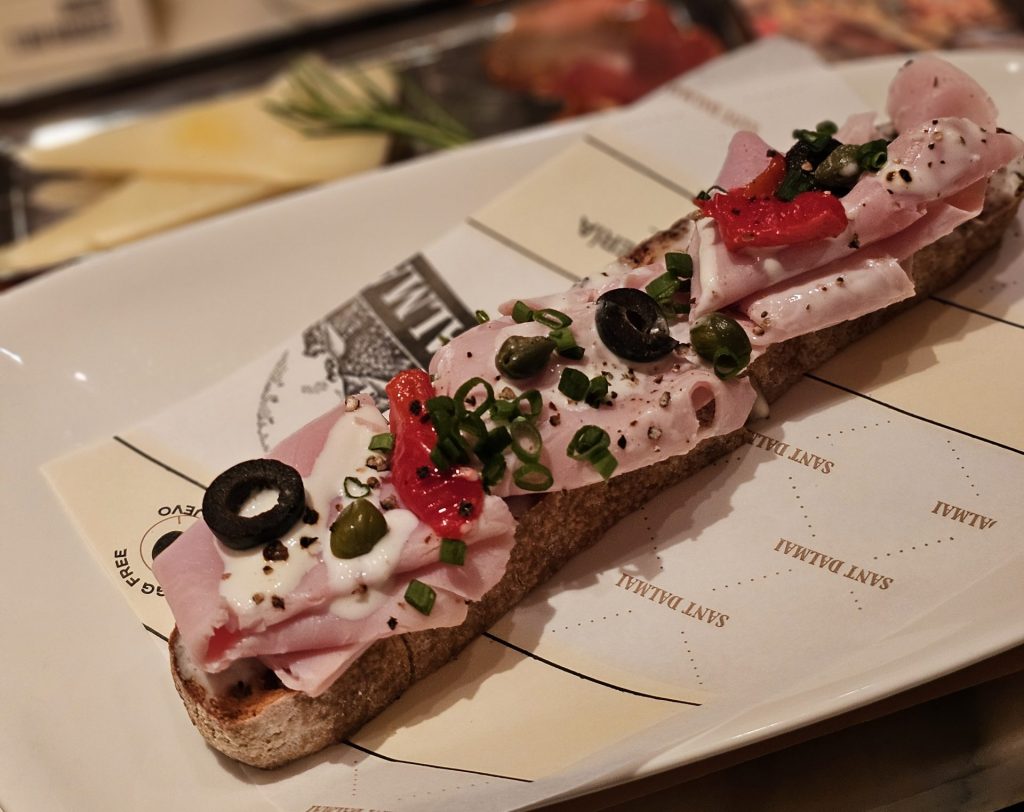
One standout at the luncheon was lomo, a delicious cured pork loin made from white pigs. Though unfamiliar to many, it turned out to be an excellent companion for wine. This inspired us to take a closer look at the different types of jamón and its delicious relatives. (Fun fact: in Spanish, it’s properly pronounced “hamón.”)

Jamon Serrano
Jamón Serrano is a dry-cured ham made from the hind leg of white pigs raised on grain feed. It’s one of the most common and affordable types of jamón in Spain, frequently found in casual tapas dishes. Compared to Iberico ham, it typically has a shorter curing period—ranging from 8 months to 2 years.
Though it’s incredibly popular, I personally find Jamón Serrano a bit too rich and fatty in texture, likely due to its shorter aging and grain-based diet, which results in a more raw-meat-like bite and a pronounced pork fat flavor. I prefer using it in cooking rather than eating it straight. That said, even a simple drizzle of olive oil and cracked pepper turns it into a lovely wine pairing.
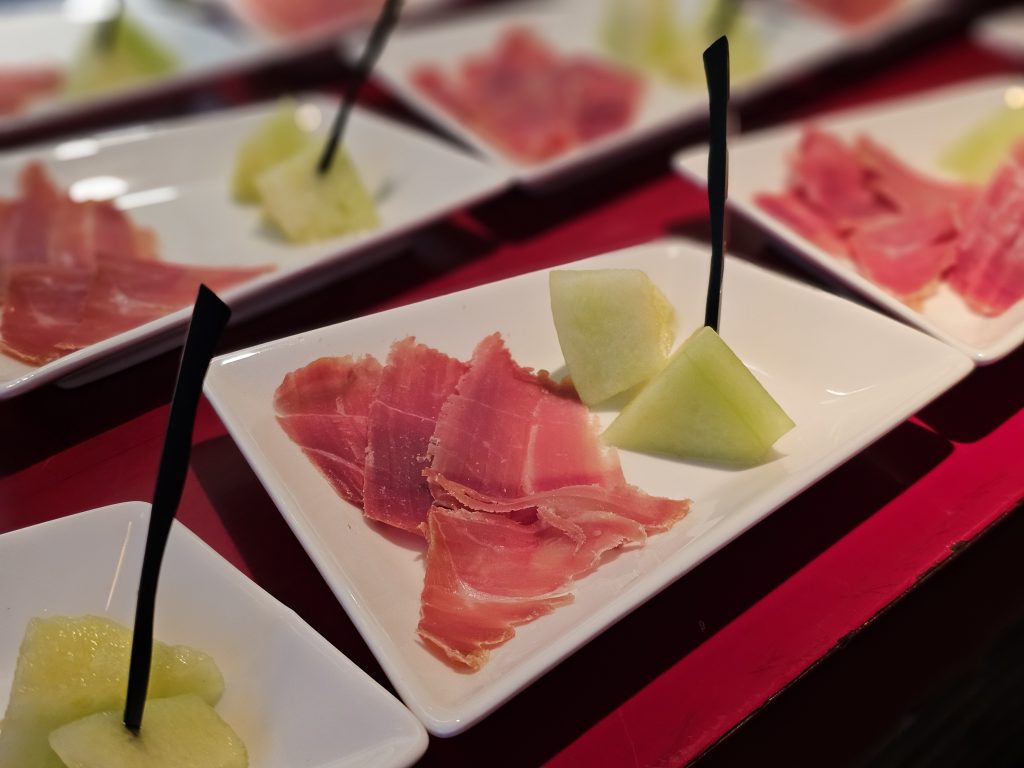
Jamon Iberico de Bellota
This luxurious ham comes from the hind legs of black Iberico pigs with curly hair. These pigs are free-range and spend the final 3–4 months of their lives roaming oak forests (dehesa), feeding on acorns (bellota). This fattening period, known as montanera, accounts for about half of the pig’s final weight.
Thanks to this unique diet, over 60% of the marbled fat in bellota ham is made up of mono triglycerides—the same healthy fats found in olive oil. The savory nuttiness that unfolds as you chew comes from those acorns. You’ll often see labels like jamón 100% ibérico de bellota, indicating whether the pig is purebred Iberico (100%) or a crossbreed (75% or 50%).
Bellota is considered the highest grade of jamón, and the 100% purebred version is the most prized. With a minimum aging period of 36 months, it’s crafted with extreme care—and the flavor justifies the hefty price tag.
Jamon Iberico Cebo de Campo
When you see “campo” on the label, it means the Iberico pigs were raised on a mix of grains and acorns, and allowed some outdoor grazing. Like bellota, the breed ratio (100%, 75%, 50%) is indicated on the label. These hams are aged for a minimum of 24 months, sometimes up to 36.
Jamon Iberico Cebo
This is dry-cured ham made from Iberico pigs that were exclusively grain-fed on farms. Often simply referred to as Jamón Ibérico, it’s also classified by breed purity (100%, 75%, 50%). With a relatively short aging period of 12 to 24 months, it offers a more accessible entry point into the world of Iberico ham, both in terms of flavor and price.
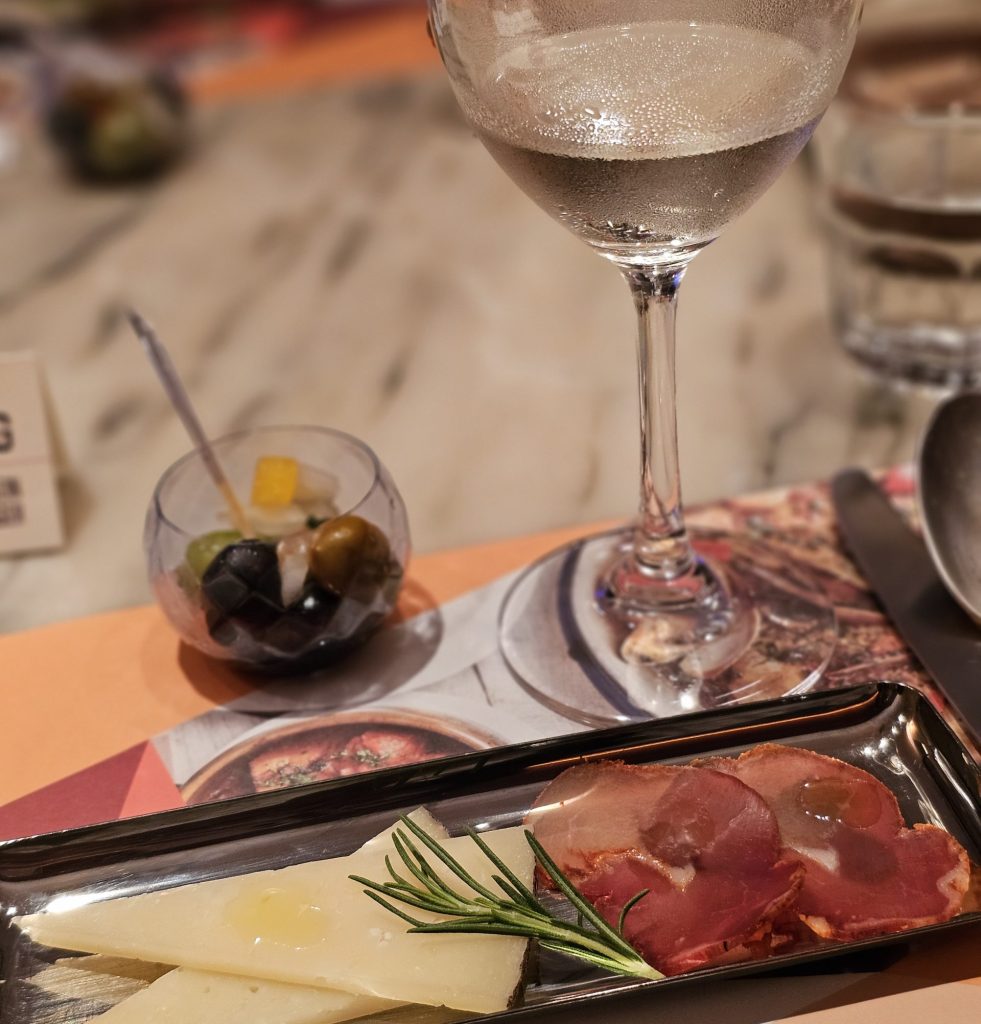
Other Spanish Cured Meats
Spain, like many European countries, offers a wide variety of pork-based cured products—made from either Iberico or white pigs. One such item is lomo, mentioned earlier: a whole pork loin cured without mincing, resulting in a chewy and flavorful texture.
Chorizo is another classic—a fermented and cured sausage made from minced pork, smoked paprika, and garlic. Its vibrant red hue hints at its bold, spicy, and slightly tangy flavor. It’s delicious on its own or used as a cooking ingredient to deepen flavors.
Salchichón is similar to salami, made by blending minced pork (including fat) with spices like black pepper, then smoked, salted, and dry-aged. It tends to be milder than chorizo, but the rich fat and occasional whole peppercorns give it an addictive depth.
In Catalonia, fuet is a traditional variation of salchichón—long, thin, and sometimes covered with white mold. A non-dried version of salchichón also exists, called butifarra, also native to Catalonia. Unlike cured sausages, it has a soft texture and resembles a fresh sausage—I haven’t tried it yet, but I’d love to.
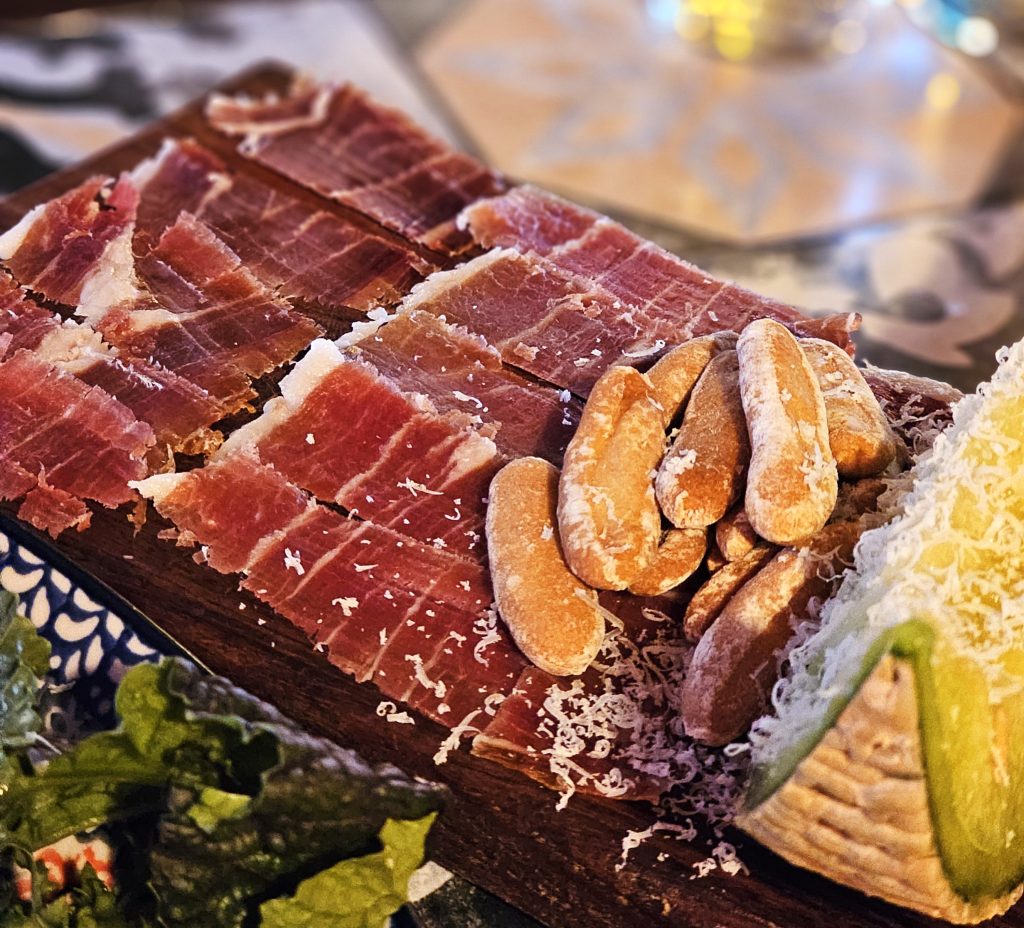
Wine Pairings
Cured hams and sausages generally pair well with most red wines. High-end Jamón Ibérico de Bellota goes particularly well with dry sherry. The nutty, yeasty notes of dry sherry harmonize beautifully with the rich, savory flavors of the ham.
Sparkling wines like Champagne also make excellent companions for jamón. As for the spicier sausages—chorizo pairs nicely with beer or spirits, while salchichón, with its peppery bite, is perfect with a spicy Garnacha.


